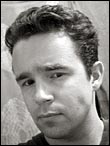|
A
Platypus Reality Check by Chris Battey |
 |
|
Photographer- -A rather popular plant this, tends to do well both indoors and outside. Needs careful watering and responds well to sunlight. Tendency to lean sideways during maturity (see chapter, supporting the mature photographer / bamboo and leather strapping) See also Chapters, Paparazzi: generic weeds ruining your garden? Celebrity Photographer: Entering your first flower show Platypus: Photography, Video Equipment and small mammals / Platypus the egg layer. I've been following the debate about Photographers needing to multi skill. With the arrival of new media, broadband and convergence, etc., where do we stand? Well, we're not a happy lotÉ are we? Some people down there are still grumbling about using flash, others swear that if Tri X goes off the market they'll take up sewing (wait a minute, sewing photography - niche market, I like it.) and so it goes on. I've walked that road before. You know, the one where you sleep in the back of your car and swear it's going to take thirty rolls of Tri X per day, a diet of custard and warm beans and then you'll get the shot, no matter what. Think about this for a minute, from the buyer's perspective... 'Are those days spent painfully stiff on the back seat, are they going to result in something that I can use? Is it topical is it even relevant? Will I buy the story?' I know I know, buying, selling it sounds like business. Absolutely. It's business, something that needs to be repeated. Photography, Journalism, Publishing, it's all big business. I say this to remind the new and ambitious, and to remind the rest of us that we live in a world of supply and demand. Understanding your market is half the battle. For example there's no point trying to sell a story if the angle is just not visual, or the cost of covering the story exceeds the value of the photographs. For example: 'It's a shot of a school nativity scene, except (no, wait you'll like this) these kids have a high IQ, the whole show is in Japanese ...Err, no the costumes are the same...hello..................hello?' I know. I spent twelve hours on a slow train to Scotland for that one. Or, to a Norwegian fishing magazine, 'It's a story about unemployed coal miners on medical trials in the UK.' It seems obvious but sometimes our need to Photograph Coal Miners is greater than our want to go fishing in Norway, but maybe there's a coal miner who's Norwegian and he's on Trial in the UK for Whaling, perhaps? 'Hey did you say you had a shot of this guy riding a whale?' The ability to multi-skill, to shoot both still and video is an asset. The greatest challenge to the cameraman/woman here is time. Have I shot enough footage? I can't edit down a twenty-minute piece if I only have 17 minutes of wild (unedited) material. As photographers, we have the advantage over video crews. We're light, work fast and try to capture a story in maybe just three pictures, sometimes only one is used. The video guy needs to work the scene, shooting for sequences, pace the story and look for cutaways. The platypus does this and also needs to consider sound. There's no excuse for a lack of excellence in all disciplines, because if we don't master the technique then the next generation will, hell, they already have. I believe there is no reason why a photographer should not be able to frame and cover a story with both still and video cameras. An example of the emerging opportunities within new technology: The recent political crisis in Fiji was handled by a journo with a Laptop. Not your ordinary door stopping gray box, but one of those funky little lavender numbers from Sony, (it has a camera mounted above the keyboard set inside the lid). Well, John Howard's (Australian Prime Minister) visit to Fiji was covered by the said, Platypus. He shot Howard's piece to camera with his computer, and cut the footage that day sending it back via the Internet from the Fiji TV station's ISDN line. I think they actually beat the commercial Networks using this method. Now, this was a journalist, and it's not that uncommon for writers to take their own pictures, so why should it be so shocking for Photographers to shoot video? Well, I've just laid another egg. I'm shooting video next week. Shooting Stills in the morning, and a video interview in the afternoon. No crew, no sound guy, just me and the subject. The story's about contraception, a new technique, and consequently the people involved don't want a herd of media swinging boom microphones and clip boards around the place, and so the photographer gets to wear two hats. As photographers we already have the advantage. We understand composition, and the video technology is pretty much idiot proof (we're also used to heavy lifting). Now all we need is practice and a good story to tell. After five years of working in Editorial and Scientific Photography in the UK, Chris Battey moved to Sydney Australia where he discovered the benefits of digital video and its ideal use underwater. Now based in Sydney he continues to shoot both video and Still Photographs for the Corporate, Press, and Public Relations market.
|
|
|
ARCHIVES
| PORTFOLIOS
| LINKS |
|